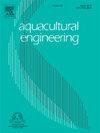Microalgae plant site selection analysis: A multi-criteria decision model based on hierarchical analysis, geographic information systems and Monte Carlo simulations
IF 4.3
2区 农林科学
Q2 AGRICULTURAL ENGINEERING
引用次数: 0
Abstract
This study develops an integrated Analytic Hierarchy Process-Geographic Information System-Monte Carlo simulation (AHP-GIS-MCS) framework to address the critical yet underexplored challenge of province-level strategic siting for microalgae cultivation plants in China. The methodology synergizes: (1) AHP to establish criteria priorities (Sunshine weighting 0.458), (2) GIS for geographic constraint mapping, and (3) MCS (10,000 trials, ±20 %-40 % perturbations) for uncertainty quantification. Kunming, Yunnan Province, emerged as the optimal location (100 % stability under perturbations) due to exceptional annual effective sunlight duration (2 345.0 h), favorable temperature, and competitive industrial costs, with Urumqi and Hohhot as socioeconomic-contingent alternatives. This work establishes a scalable decision-support paradigm for bioenergy planning while bridging theoretical gaps in algal plant siting methodologies. Future extensions should prioritize fuzzy-AHP implementation, dynamic policy module integration, and municipal-level downscaling to enhance operational utility.
微藻工厂选址分析:基于层次分析、地理信息系统和蒙特卡罗模拟的多准则决策模型
本研究开发了一个综合层次分析法-地理信息系统-蒙特卡罗模拟(AHP-GIS-MCS)框架,以解决中国微藻种植工厂省级战略选址的关键问题。该方法协同:(1)AHP建立标准优先级(Sunshine权重0.458),(2)GIS用于地理约束映射,(3)MCS(10,000次试验,±20 %-40 %扰动)用于不确定性量化。云南省昆明因其特殊的年有效日照时数(2 345.0 h)、有利的温度和具有竞争力的工业成本而成为最优地点(100% %在扰动下的稳定性),乌鲁木齐和呼和浩特是社会经济条件下的备选地点。这项工作为生物能源规划建立了一个可扩展的决策支持范例,同时弥合了藻类植物选址方法的理论差距。未来的扩展应优先考虑模糊层次分析法的实施、动态策略模块集成和市级缩减规模,以增强运营效用。
本文章由计算机程序翻译,如有差异,请以英文原文为准。
求助全文
约1分钟内获得全文
求助全文
来源期刊

Aquacultural Engineering
农林科学-农业工程
CiteScore
8.60
自引率
10.00%
发文量
63
审稿时长
>24 weeks
期刊介绍:
Aquacultural Engineering is concerned with the design and development of effective aquacultural systems for marine and freshwater facilities. The journal aims to apply the knowledge gained from basic research which potentially can be translated into commercial operations.
Problems of scale-up and application of research data involve many parameters, both physical and biological, making it difficult to anticipate the interaction between the unit processes and the cultured animals. Aquacultural Engineering aims to develop this bioengineering interface for aquaculture and welcomes contributions in the following areas:
– Engineering and design of aquaculture facilities
– Engineering-based research studies
– Construction experience and techniques
– In-service experience, commissioning, operation
– Materials selection and their uses
– Quantification of biological data and constraints
 求助内容:
求助内容: 应助结果提醒方式:
应助结果提醒方式:


